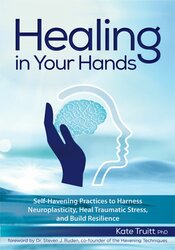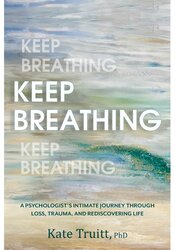Pushing Pause on Your Amygdala: Strategies for Slowing Down the Stress Response
Free exercise to rewire stress response

Ever reacted before your rational brain even had a chance to catch up? Maybe you snapped at a loved one, shut down in an argument, or felt overwhelmed by a seemingly small moment. That’s not you failing—it’s your amygdala doing what it’s designed to do: protect you.
I like to call the amygdala Amy—a fierce and loyal guardian who has been fine-tuning the human survival response for over 300 million years. The challenge? Amy operates on an ancient system. Instead of saber-toothed tigers, today she’s scanning for modern “threats” like an unread email, a partner’s tone of voice, or an unexpected traffic jam.
The problem isn’t Amy’s speed—it’s that she sometimes misreads the situation, activating stress responses based on old data. But the good news? You can rewire how she responds.
How to Use the Push-Pause Practice
Why It Works: The Science of a Pause
When we pause instead of reacting, we engage the prefrontal cortex—the part of the brain responsible for logic, problem-solving, and decision-making. This signals to Amy that not every trigger is an emergency, reducing the intensity of future stress responses. With time and practice, your brain will default to response over reaction, helping you build resilience, emotional flexibility, and a deeper sense of control.
I like to call the amygdala Amy—a fierce and loyal guardian who has been fine-tuning the human survival response for over 300 million years. The challenge? Amy operates on an ancient system. Instead of saber-toothed tigers, today she’s scanning for modern “threats” like an unread email, a partner’s tone of voice, or an unexpected traffic jam.
The problem isn’t Amy’s speed—it’s that she sometimes misreads the situation, activating stress responses based on old data. But the good news? You can rewire how she responds.
The CASE for Self: How Amy Interprets Your World
Amy’s decision-making is based on four key categories of data—what I call the CASE for Self:- Cognitions (C): Thoughts, beliefs, and interpretations shaped by experience.
- Autonomic Nervous System (A): Physiological signals like a racing heart or tight chest.
- Somatosensory Experiences (S): Gut instincts, implicit memories, and body-based knowing.
- Emotions (E): The foundation of experience, shaping how we react before logic kicks in.
The Push-Pause Practice: Your Brain’s Reset Button
The Push-Pause Practice is a simple yet powerful way to interrupt automatic reactions, giving your brain the space to respond intentionally instead of reacting impulsively.How to Use the Push-Pause Practice
- Recognize the Activation – Notice when your stress levels start climbing above a five on your internal scale.
- Push Pause – Imagine pressing an internal pause button or say, “I need a moment.”
- Breathe & Regulate – Take a deep breath and exhale slowly to remind Amy there’s no immediate danger.
- Engage in a Brain-Calming Technique:
- CPR for the Amygdala® – Learn more about how to actively soothe and heal your amygdala here.
- Sigh Breath with Mindful Touch – A deep exhale paired with grounding touch. You can learn more about this powerful regulating exercise here.
- Color and Breath Titration Exercise – Using breath and visual focus to calm the nervous system.
- Mindful Grounding with Distractions – Redirecting attention to shift out of reactivity.
Why It Works: The Science of a Pause
When we pause instead of reacting, we engage the prefrontal cortex—the part of the brain responsible for logic, problem-solving, and decision-making. This signals to Amy that not every trigger is an emergency, reducing the intensity of future stress responses. With time and practice, your brain will default to response over reaction, helping you build resilience, emotional flexibility, and a deeper sense of control.
Bringing Push-Pause into Daily Life
This practice isn’t just for big emotional moments—it’s a daily brain-care tool. Try using Push-Pause:- Before responding to a frustrating email or text.
- When you notice tension creeping into your body.
- In moments of anxiety or overwhelm.
- As part of your morning or evening check-in.
Healing in Your Hands

The power to heal the wounds of your past, create your present, and build your future is in your own hands.
Written by Dr. Kate Truitt, a psychologist, neuroscientist, and trauma expert, Healing in Your Hands is the first book of its kind to integrate the neuroscience of trauma with cutting-edge research on self-havening – a groundbreaking technique that draws on the power of mindful touch to heal even the most profound traumatic stress. It weaves together powerful client stories, insights from the field of neuroscience, and personalized havening practices to create a complete self-healing program that anyone can use.
Written by Dr. Kate Truitt, a psychologist, neuroscientist, and trauma expert, Healing in Your Hands is the first book of its kind to integrate the neuroscience of trauma with cutting-edge research on self-havening – a groundbreaking technique that draws on the power of mindful touch to heal even the most profound traumatic stress. It weaves together powerful client stories, insights from the field of neuroscience, and personalized havening practices to create a complete self-healing program that anyone can use.
Keep Breathing

In Keep Breathing, Dr. Kate Truitt, a renowned psychologist, applied neuroscientist, and trauma expert, shares her story of unimaginable loss, trauma, and ultimately, healing. Faced with the sudden-gut wrenching death of her fianće just one week before their wedding day, Kate found her world shattered, catapulting her into a deep void of profound grief, trauma, shock, and guilt.
Part memoir and part scientific exploration, Keep Breathing uses Kate’s own account as a case study to illuminate the common experiences in our human brain – deep love and devasting loss, exhilaration and pain, life and death – that have the power to both derail our lives and ignite us to rebuild, heal, and grow. Her deeply personal loss sheds light on the human spirit’s extraordinary ability to persevere and thrive in the face of suffering – providing readers with a roadmap to navigate their own paths to healing and self-discovery. With its raw yet warm candor, Kate’s brave storytelling exemplifies what it means to truly come back to ourselves.
Part memoir and part scientific exploration, Keep Breathing uses Kate’s own account as a case study to illuminate the common experiences in our human brain – deep love and devasting loss, exhilaration and pain, life and death – that have the power to both derail our lives and ignite us to rebuild, heal, and grow. Her deeply personal loss sheds light on the human spirit’s extraordinary ability to persevere and thrive in the face of suffering – providing readers with a roadmap to navigate their own paths to healing and self-discovery. With its raw yet warm candor, Kate’s brave storytelling exemplifies what it means to truly come back to ourselves.
Meet the Expert:
Dr. Kate Truitt, a clinical psychologist, applied neuroscientist, and international bestselling author, is an expert in trauma, stress, and resilience. She is the founder of the educational platform Truitt Institute and leads her award-winning clinical team at Dr. Kate Truitt & Associates. As a member of the Goldie Hawn Foundation’s MindUP Scientific Advisory Committee and a co-Developer of the Havening Techniques®, as well as an expert contributor to the Kevin Love Fund and Girl Scouts of America, Dr. Truitt passionately advocates for mental health literacy and personal empowerment globally. Her voice in the mental health arena extends to her role as a speaker and media consultant, including being featured in BBC and Today, and also speaking at prestigious platforms like the United Nations and the United States Department of Defense. Dr. Truitt founded and is the Chairman of the Board for the Amy Research Foundation, a 501c3 organization focused on advancing research into the innovative treatment realm of neuroscience-based mental health and wellness interventions. As the author of her memoir, #1 Top New Release, Keep Breathing: A Psychologist’s Intimate Journey Through Loss, Trauma, and Rediscovering Life and the international bestseller Healing in Your Hands: Self-Havening Exercises to Harness Neuroplasticity, Heal Traumatic Stress, and Build Resilience, she is dedicated to advancing the treatment of traumatic stress while making significant strides in destigmatizing mental health and fostering resilience worldwide.
Learn more about her educational products, including upcoming live seminars, by clicking here.
Learn more about her educational products, including upcoming live seminars, by clicking here.






